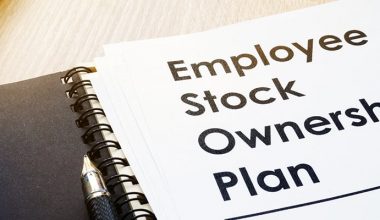Each year, it’s a priority for any business owner worth their salt to identify strategies to get the most out of their depreciation and deductions for company assets. Regular asset depreciation is something you’re definitely already taking advantage of, but bonus depreciation could be something you’re missing out on. Bonus depreciation can reduce an investor’s taxable net income. Likewise, an investor may be able to deduct the whole cost of certain capital upgrades between now and the conclusion of the 2023 tax year. This manual will explain, with an example, how bonus depreciation works in 2023. We’ll also discuss bonus depreciation vs 179 while also making reference to a BD vehicle.
Bonus Depreciation 2023- Overview
Bonus depreciation allows businesses to be eligible for a 100% bonus deduction when they acquire qualifying assets and place them in operation between September 27, 2017, and January 1, 2023. The date of a signed binding contract is the acquisition date for any property purchased under the terms of that contract, which may include further bonus periods. For assets that enter service after December 31, 2022, but before January 1, 2027, the 100% bonus depreciation will see a reduction of 20% per year.
By utilizing the depreciation method, a company can write off the price of an asset over the course of its useful life. Let’s look at a bonus depreciation example; if you buy a piece of machinery for $12,000 in 2023 and plan to use it for the next decade, you may choose to depreciate it over ten years by writing off only $1,200 per year.
While the $1,200 tax break is appreciated, it may not be enough to spur you to make necessary capital improvements to your business at a time when Congress is pressuring entrepreneurs to boost the economy by buying assets. That’s why the idea of depreciation came to life.
What is Bonus Depreciation?
Bonus depreciation is a form of tax benefit that gives business owners the opportunity to report a bigger portion of their asset’s depreciation in the same year that the equipment was purchased and placed in service. Your company may be eligible to take a tax deduction equal to one hundred percent of the cost of any asset purchased during the tax year in which the asset was acquired. There are limitations and requirements, therefore not all assets are acceptable.
According to the current tax law, this tax code enables you to expense the entire cost of purchasing the majority of fixed assets in the same year that they are purchased and put into service, just like you do with the majority of other business expenses.
You will be able to deduct the cost of your staplers as well as the cost of your heavy machinery in the same year that they were acquired and put to use. Although there are a few distinct approaches to deducting, either one of these, the end result is the same.
The below table is an example of bonus depreciation rates under the new law;
Bonus Depreciation Percentage
| Assets Placed in Service in | Qualified Property (General/Specified Classes) | Certain Aircraft & Properties with Longer Production Periods |
| Sept. 28, 2017- Dec. 31, 2022. | 100% | 100% |
| 2023 | 80% | 100% |
| 2024 | 60% | 80% |
| 2025 | 40% | 60% |
| 2026 | 20% | 40% |
| 2027 | None | 20% |
| 2028 and beyond | None | None |
What Qualifies for Bonus Depreciation?
Although it is available to all business owners, in theory, only specific assets are really eligible for it.
Basically, for a business to qualify for depreciation advantages, it must own certain types of commercial property, and;
- Its maximum lifespan must be less than 20 years. However, land and buildings, for instance, aren’t included because they have a significantly longer useful life than 20 years.
- It’s classified as a qualified improvement property, which includes everything used to enhance the inside of a commercial or industrial facility.
- It can be used in productions of movies, TV shows, or plays that meet certain criteria.
- It’s multipurpose, serving both professional and private needs (e.g., cameras and vehicles).
Is Bonus Depreciation Allowed in 2023?
Businesses have a stronger incentive to make purchases in the near future as a result of the increase in the bonus depreciation cap to 100 percent through 2023. Before the Tax Cuts and Jobs Act was enacted, the maximum allowable bonus depreciation used to change from year to year.
Is Bonus Depreciation Still Available in 2023?
The Internal Revenue Service (IRS) will frequently refer to bonus depreciation as a “special depreciation allowance.” Section 168 of the Internal Revenue Code is the provision that enables this deduction (k). Therefore, beginning in the year 2023, firms were opportune to potentially earn a deduction equal to the full cost of “eligible business property.’’ However, this is only after first applying for any available deductions under section 179.
What is the Bonus Depreciation Rate for 2023?
After September 27, 2017, and before January 1, 2023, a company can deduct 100% of the purchase price of qualifying assets. This is an upgrade from 50% under the previous rule. However, beginning in 2023, that maximum will gradually decrease to 0%. Beginning in 2023, the rate will be as follows:
- 2023: 80%
- 2024: 60%
- 2025: 40%
- 2026: 20%
Bonus Depreciation Example
Bonus depreciation is calculated by multiplying the cost of the qualifying asset by the applicable bonus rate.
If you spend $12,000 on new machinery in 2022, for example, you will be eligible for the full $12,000 bonus depreciation. However, if you pay the same $12,000 on the same type of equipment in 2023, the extra depreciation on a such item will be $10, 000.
Example 2
In this bonus depreciation example, an annual taxpayer puts a new $120,000 machine into operation in June 2017. The depreciation deduction is 50% of the total cost. In addition, in January of 2017, the taxpayer put into operation secondhand equipment that cost $120,000. Since the machine is already in operation and was purchased before September 28, 2017, bonus depreciation does not apply. The taxpayer does not make a choice to deduct any of the costs associated with the transaction under section 179. Because more than 40% of the depreciable basis of property that was not lowered by bonus depreciation was placed in operation during the last three months of the tax year ($120,000 / $240,000 = 50%), the mid-quarter standard applies to both new and used machines.
Let’s sight one more example to foster our understanding of bonus depreciation. A taxpayer puts $500,000 worth of equipment into service in January 2017. However, this equipment does not qualify for bonus depreciation. Instead, the taxpayer claims a 100% bonus deduction on $700,000 worth of equipment that was put into service in December. Under section 179, neither of these properties can be written off in any amount. Because more than 40 percent of the total aggregate basis of both items of the property was placed in service in the fourth quarter of the tax year, the mid-quarter convention is applicable to the piece of property that was put into service in January.
Bonus Depreciation Vs 179
I hope you already know about and make use of these tax breaks up (bonus depreciation vs 179) when making equipment purchases. If not, here is the thing. Your company can deduct the cost of its new machinery and tools over the course of the equipment’s useful life. Of course, that’s no reason to hold off. You can get your complete tax savings in one lump sum by using either of these two options.
Perhaps you’re wondering what set the distinction between Section 179 and Bonus Depreciation? Both (section 179 vs bonus depreciation) allow business owners to write off a certain amount of money spent on capital expenditures.
Before the new rules, only 50% of an asset’s cost could be deducted in the first year under bonus depreciation. This rate has however seen an increment to 100% ( under the 2020 Bonus Depreciation new regulations). As a result, both models now allow you to deduct the full cost in the first year. The (2020 Section 179 standards) allow for greater discretion in timing deductions, while Bonus Depreciation can be applied to more purchases each year.
This is especially helpful to new businesses that need to make significant investments in equipment and can take advantage of these deductions to receive significant tax relief. There are distinctions between the two procedures despite the fact that the two methods share a fundamentally comparable premise. The good news is that you are free to choose either option (or neither option) according to your needs and preferences.
Bonus Depreciation Vs 179 – Key Similarities
- Both deductions make it possible to make significant write-offs in the year that an asset was first put into use.
- Both of these deductions can be applied to new and used tangible property, as long as the property did not come from an inheritance, was not a gift, and was not purchased from a connected person.
Bonus Depreciation Vs 179 – Key Differences
With respect to Section 179 depreciation, the amount that can be written off is limited by the IRS’s threshold ($2,580,000 in 2020) and the amount by which purchases exceed that barrier ($1,040,000 in 2020). On the other hand, there is no yearly cap on the write-off of bonus depreciation.
The options are more open with Section 179. For assets that qualify under Section 179, firms can deduct an unlimited amount up to the thresholds. Businesses can pick and choose which assets to cover or save, and in what proportion. A company that wants to take advantage of bonus depreciation on the other hand must write off the full percentage (100 percent in 2020) for all assets within the selected asset class. Otherwise, no depreciation will be carried over into subsequent years.
Unlike bonus depreciation, which can be exploited to generate a net loss, Section 179 deductions are capped at the taxpayer’s taxable income.
Is it Better to Take Section 179 or Bonus Depreciation?
The optimal technique (179 vs bonus depreciation) of write-off is up to the individual investor. Generally, there are benefits and drawbacks to both.
An investor can reduce their current tax liability by choosing to take bonus depreciation, but in doing so, they will not be able to write off that expense in the future.
The benefit of Section 179 is increased flexibility, but only up to a certain point. Bonus depreciation can be taken at any time, but the investor will never get a write-off.
Always seek the advice of a professional tax preparer or counselor when deciding whether to take advantage of a tax write-off or deduction.
Bonus Depreciation Vehicle
Tax planning for fleet expenditures, like mileage and leasing, can have a significant impact on final costs. This new vehicle bonus depreciation allows business owners to write off their vehicles immediately rather than over a longer period of time, as is customary under the old system.
Rather than spreading the tax savings throughout the useful life of a vehicle or asset, new tax laws allow for a lump-sum deduction upon purchase. This is especially helpful if your company has recently made a large purchase, such as a fleet of vehicles. You can take advantage of the vehicle depreciation today with two tax provisions ( Section 179 vs bonus depreciation). While bonus depreciation could alter from year to year due to federal tax law changes, Section 179 is always in effect.
New Vehicle Tax Code – Section 179 Vs Bonus Depreciation
Businesses can deduct up to $1 million in depreciable assets each year under the Section 179 special deduction tax code (enacted by Congress in 2015). This also includes cars classified as SUVs or trucks. As an alternative, the 2017 Tax Cuts and Jobs Act provides for bonus depreciation, which permits businesses to write off a portion of a vehicle cost and other assets purchased during the year.
There are key distinctions between Section 179 and the bonus depreciation and it’s crucial for businesses to grasp the two alternatives to make the best decision for tax advantages. The bonus deduction is a percentage of the cost of a new piece of business equipment, while the Section 179 deduction is a fixed dollar amount. According to the depreciation regulations of 2020, firms can now deduct the full purchase price of a vehicle or truck.
As an alternative to spreading out your deductions over multiple years, both Section 179 and bonus depreciation let you write off the entire price of your vehicle(s) in a single year. Regardless, you need to determine which one offers the best vehicle tax benefits for your company.
What are the Benefits of Using Vehicle Depreciation?
Bonus depreciation for a vehicle, in contrast to Section 179, is not cost-based. Basically, you can write off the whole price of any asset or vehicle you buy with bonus depreciation. In addition, there is no limit on the amount of yearly business income that you can use in conjunction with the bonus depreciation. Likewise, you can continue to use any excess deductions in subsequent years.
However, under this option, you must apply the depreciation to the full cost of your vehicle or other assets, and they must all be in the same class. You can apply both Section 179 and depreciation for your vehicle in the same year, which is good news. Nevertheless, you should still talk to an accountant to figure out which option is best for your company.
Conclusion
The tax benefits of bonus depreciation can be substantial for businesses that invest in furniture, equipment, and other forms of fixed assets in 2023. However, it is important to know that depreciation caps and regulations are dynamic.
So, you should always consult your tax advisor before making any major purchases for your company, including real estate. This will allow you to ensure that you are making the most advantageous choice for your company.
FAQs
Does bonus depreciation have a refund?
Bonus depreciation is taxed and reclaimed when a rental property is sold, much like regular depreciation.
Do vehicles fall under a different set of bonus depreciation guidelines?
Bonus depreciation caps may vary by vehicle type and size. To prevent excessive deductions for luxury automobiles and those used primarily for personal transportation, the Internal Revenue Service places differing limits on different types of vehicles.
How do you record bonus depreciation on your tax return?
Bonus depreciation for an asset or vehicle for example can be easily recorded or claimed on a tax return. You can use IRS Form 4562 to keep track of and look back on your business’s bonus depreciation.
Related Articles
- ACCUMULATED DEPRECIATION: Calculation & Examples
- DEPRECIATION ACCOUNTING: Definition, Methods, Formula & All You Should Know
- STRAIGHT LINE DEPRECIATION: How to Calculate Straight Line Depreciation
- MORTGAGE INTEREST DEDUCTION: Can You Deduct Mortgage Interest?
Reference
(Xanax)






